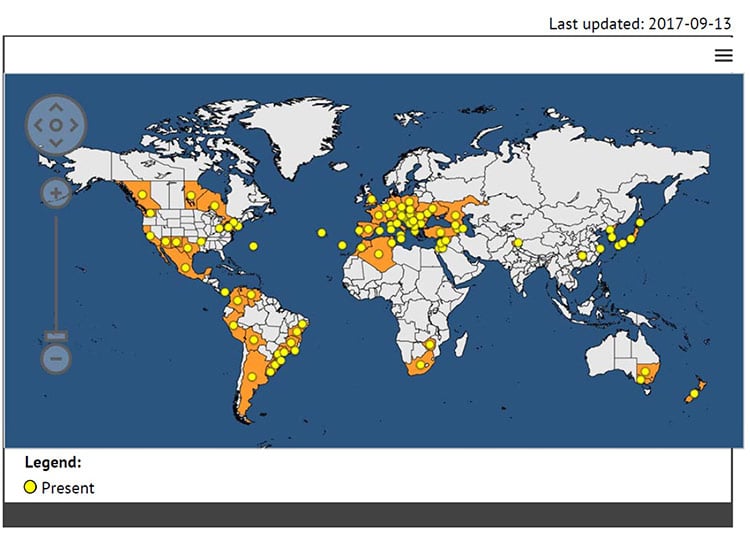It’s common to visit vineyards in other countries when you work in the wine industry, or an allied industry.
But are you aware of the risk this can pose to our industry? Do you consider biosecurity when travelling back into Australia? Does your company include biosecurity information in travel documents?
Currently in Australia, we’re fortunate not to have many of the diseases and pests that are present in vineyards overseas. This allows us to manage our vineyards in a comparatively clean and green way.
But what are the main exotic pests and diseases that we need to keep on our radar? Click here for Vinehealth Australia’s If You Spot Me, Report Me pest and disease poster and accompanying information https://vinehealth.com.au/industry/resources/farm-gate-hygiene/farm-gate-hygiene-posters/.
The New Zealand Winegrower (https://www.ruralnewsgroup.co.nz/wine-grower/wg-general-news/the-circle-of-death-phylloxera-strikes-in-martinborough) recently reported that more vineyards in Martinborough are succumbing to the destructive grape phylloxera.
With Australia’s strong connections to the New Zealand wine industry, this is a stark reminder for those that travel to New Zealand to be vigilant in their biosecurity efforts. In fact, phylloxera is found in the vast majority of grapegrowing countries worldwide (see Figure 1). And while grape phylloxera is an existing biosecurity threat in Australia, it is currently confined to regions in Victoria and New South Wales.
South Australia, Western Australia, Northern Territory and Tasmania are recognised as being free of phylloxera. Queensland wine growing regions are currently categorised as phylloxera risk zones.
And while the movement of vectors that can spread phylloxera from one place to another, including machinery, equipment, grapes and grape products, grapevine propagation material and soil, are tightly controlled between Phylloxera Management Zones in Australia, people movement is not.
Please refer to Vinehealth Australia’s Employing International Staff fact sheet for what you need to communicate to overseas workers. It will also guide your actions upon re-entry into Australia.
It’s important that you are aware of biosecurity risks associated with footwear, clothing and tools, and how to manage and mitigate these risks, particularly when you receive visitors to your vineyards, or when you return from an overseas trip that involved visiting vineyards.
Please familiarise yourself with the content in our Biosecurity Planning for Vineyard Owners Hosting Visitors Fact Sheet for more information about this important topic.
